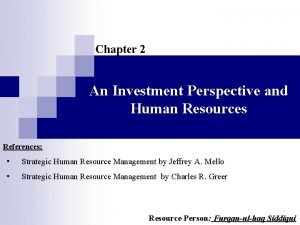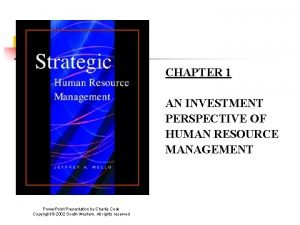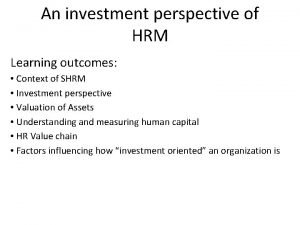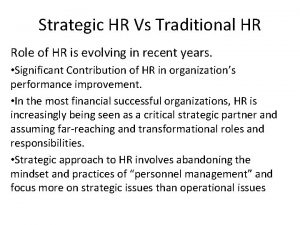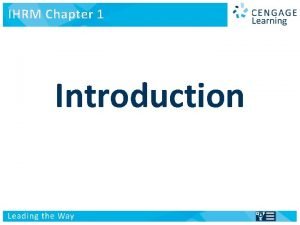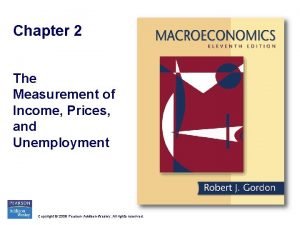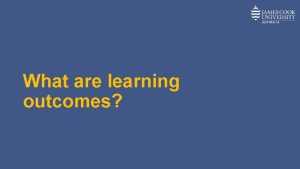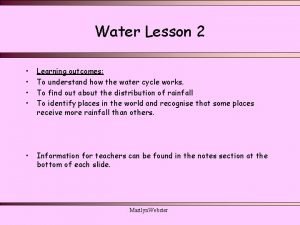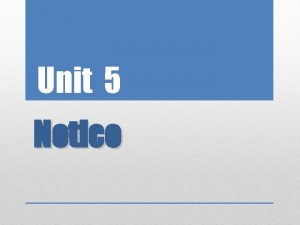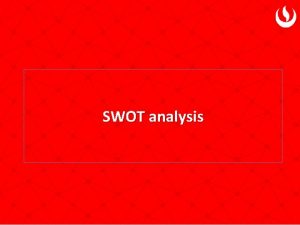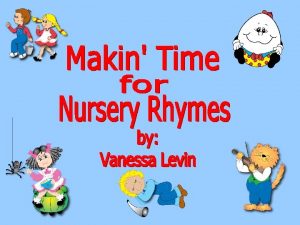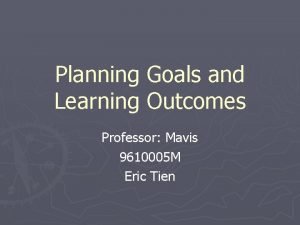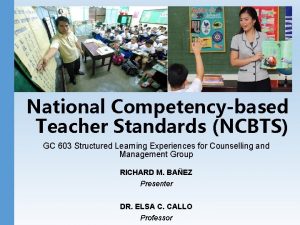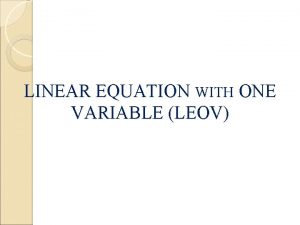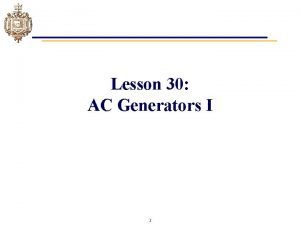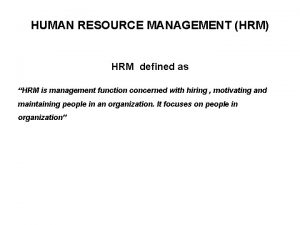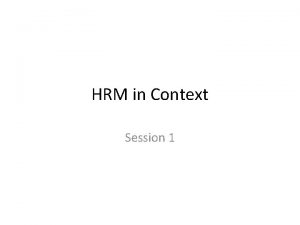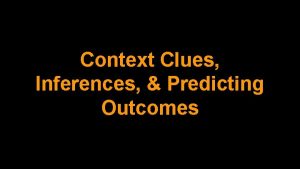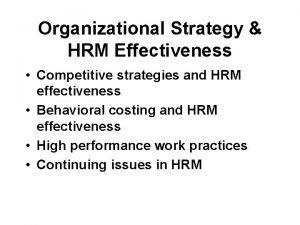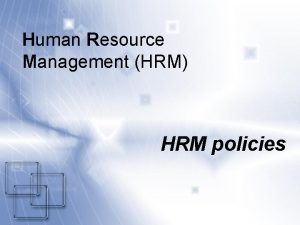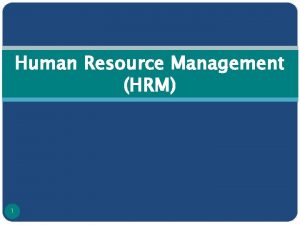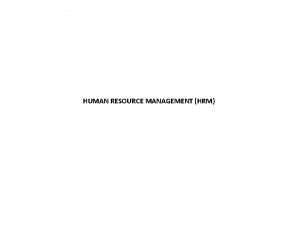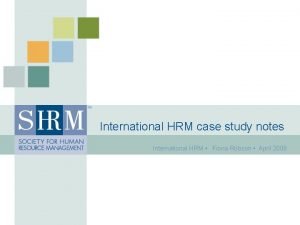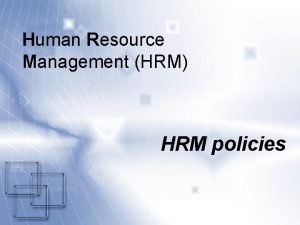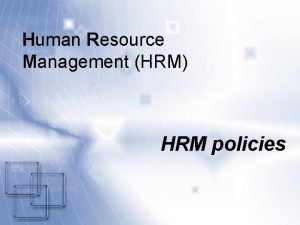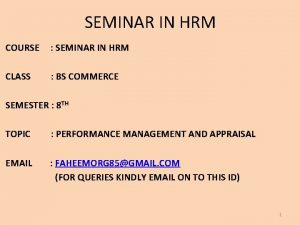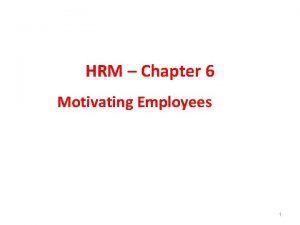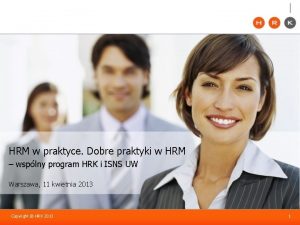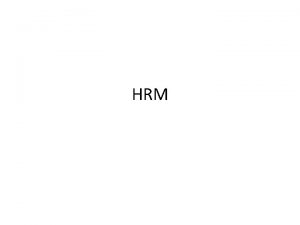An investment perspective of HRM Learning outcomes Context
















- Slides: 16

An investment perspective of HRM Learning outcomes: • Context of SHRM • Investment perspective • Valuation of Assets • Understanding and measuring human capital • HR Value chain • Factors influencing how “investment oriented” an organization is

An investment perspective of HRM • Nordstrom: – How can retailer gain a competitive advantage in a cutthroat marketplace? – Nordstrom, has consistently produced above industry average profits and continued to be profitable when its competitor’s profit were falling or flat. – Nordstrom’s success lies with the different way its manages its employees – Sales employees? ? ? – Superlative customer services – Heavy investment in the organization’s sales force – Extensive training

An investment perspective of HRM Effective organization: • Source of competitive advantage is not only from product design or service, marketing strategy or financial services but having appropriate systems for attracting, motivating, retaining and managing organization’s HR. • Adopting a strategic view of HR, in large part, involves considering employees as human Assets. • Appropriate polices and programs as investment in human assets to increase their value to the organization and market. • What an asset actually is; something of value and worth • Employees do have value and worth • Sources of employee value

An investment perspective of HRM Sources of employee value • Technical knowledge: – Markets, customers, processes, environment • Ability to learn and Grow – Openness to new ideas, acquisition of knowledge/skills • • Decision making capabilities Motivation Commitment Teamwork – Interpersonal skills – Leadership ability

An investment perspective of HRM Adopting an investment perspective • Physical and Capital assets in organizations such as plant, property, machinery, and technology are acquired and subsequently managed most effectively by treating them as investments. • Return of such expenditures? • Expense of new training program for employees • Costs against potential benefits of training • Taking investment perspective towards HR is critical

An investment perspective of HRM Invest in physical assets: • Facilities • Products • Services • Technologies • Markets Human assets can not be duplicated and become competitive advantage!!!! Critical for organization to select to invest in physical or human assets What do you think? ? ? ?

An investment perspective of HRM Valuation of Assets: Ease of measurement More Difficult Financial Equity, securities, investment, receiveables Physical Plant, land, equipment, raw materials Market Goodwill, branding, product line, customer loyalty, trademarks Operational Management practices, technology, structure of work Human Education, knowledge, skills, competencies, personal relationship

An investment perspective of HRM Understanding and measuring human capital • HPWS? ? ? – Demonstrated that integrated, strategically focused HR practices were directly related to profitability and market value. – Organizational profitability is the effective management of human capital – Human capital can result in up to 47 percent increase in market value – Variety of HR management quality indices found that organizations enjoyed 391 percent on ROI in human capital – Its HR value chain……

An investment perspective of HRM HR value chain: • Performance could be measured via four different sets of outcomes; – Employee – Organizational – Financial – Market based Sequential cause – and – effect relationship

An investment perspective of HRM • HR value chain Employee outcomes • Attitudes • Behavior organizational outcomes • Productivity • Quality Financial/ accounting outcomes • Expenses • Revenues • profitability Market based outcomes • stock price

An investment perspective of HRM • Factors influencing how “investment oriented” An organization is? ? ? – Management values – Attitude toward risk – Nature of employee skills – Utilitarianism – Availability of outsourcing

An investment perspective of HRM • Management Values – Management appreciate the value of its human assets relative to capital assets such as brand names, distribution channels, facilities and equipment. – Organization see its people as being central to its mission? – Role of human assets in achieving goals? – Management philosophy encourage the development of employees?

An investment perspective of HRM • Attitude towards risk: – Trade off exist between risk and return – Higher risk investments generally are expected to have a greater potential returns – Lower risk, safer investment – Invest on human asset is more risky than physical – Investment on employees in necessary for success or invest on physical resources for competitive advantage

An investment perspective of HRM • Nature of employees skills: – Specialized skills – Applicable widely in industry – Specialized training – Retention strategy – Marketable skills – Demanded skills or less marketable

An investment perspective of HRM • Utilitarianism: – Mentality of the organization – It should be useful and practical rather than attractive – Cost benefit analysis – Difficulty to quantify

An investment perspective of HRM • Availability of outsourcing – Cost effective outsourcing – Investment produce a sustainable competitive advantage – Employees in fast food industry – Mc. Donalds, invest in their people or physically?
 Investment perspective of hr
Investment perspective of hr Investment perspective of shrm
Investment perspective of shrm Investment perspective of hrm
Investment perspective of hrm Traditional vs strategic hr
Traditional vs strategic hr Domestic and international human resource management
Domestic and international human resource management Fixed investment and inventory investment
Fixed investment and inventory investment Example of learning outcomes
Example of learning outcomes Water cycle learning outcomes
Water cycle learning outcomes Notice lesson plan
Notice lesson plan Objective of swot
Objective of swot Objectives of teaching rhymes
Objectives of teaching rhymes Planning goals and learning outcomes
Planning goals and learning outcomes Photosynthesis chlorophyll
Photosynthesis chlorophyll Objectives of photosynthesis
Objectives of photosynthesis Ncbts
Ncbts Objectives of linear equations in one variable
Objectives of linear equations in one variable Learning outcome generator
Learning outcome generator
